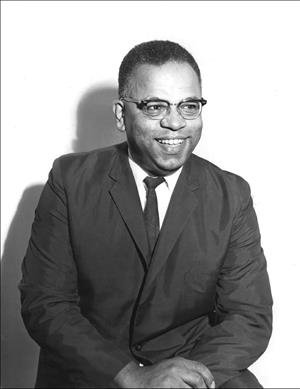A Learning Moment: The Landmark Nomination of Benjamin McAdoo’s Queen Anne Pool
The landmark nomination of the Queen Anne Pool by the Queen Anne Historical Society creates a remarkable learning moment about historic preservation. The pool opened in 1977 as the last project of the transformative Forward Thrust levy. It is the work of Benjamin F. McAdoo (1920-1981), the first licensed African American architect in Washington state. The nomination will be the focus of a talk by Spencer Howard and Katie Pratt at 6:00 p.m. on February 1, 2024, at the Queen Anne Public Library. Northwest Vernacular, Howard and Pratt’s firm, prepared the nomination that will soon be before the city’s Landmarks Preservation Board.
Queen Anne Pool looking east from First Ave W. Photo: Marsha Savery, December 2023.
The nomination provides a unique moment for understanding Seattle’s landmark ordinance. As Lawrence Kreisman, a beloved defender of Seattle’s historic built environment, wrote in 2000 and reprinted this year (https://www.seattletimes.com/pacific-nw-magazine/a-seattle-preservationist-revisits-wins-and-losses-and-why-they-matter/):
A landmarks program attempts to safeguard community resources that are historically significant and educate owners to the importance of preserving them. Landmark buildings document creativity, technological innovation, aesthetic and community values, and forces that shaped our growth.
Temple de Hirsch at 16th and Union between 1908 and 1914. Kreisman calls it a great loss. Only the colonnade remains. Postcard image.
Historic preservation as expressed in Seattle’s landmark ordinance is not about saving beautiful things. Indeed, beauty is not an easily shared value which Seattle’s preservation law doesn’t even mention. Only one of Seattle’s six criteria for landmark designation addresses the features of potential landmarks. It reads: “It embodies the distinctive visible characteristics of an architectural style, period, or a method of construction.” You can find the criteria here on the city’s website. To designate a building or site as a Seattle landmark, the Landmarks Preservation Board must certify that it meets only one of the six criteria.
Personally speaking, the McAdoo pool, as I like to call it, meets at least three landmark criteria. First, it may be one of the most distinctive buildings in our Queen Anne neighborhood and meets “the distinctive visible features” definition cited above. Howard and Pratt, our February 1, speakers describe it in their nomination simply Modern. Either way, the pool qualifies.
The pool may also qualify for designation because of its association with Forward Thrust the twelve 1968 bond propositions which included $40 million for the multi-purpose stadium (the Kingdome) and $118 million for new parks. There is every reason to believe that the pool which fell under the new parks proposition, “is associated in a significant way with a significant aspect of the cultural, political, or economic heritage of the community, city, state or nation.” The components of Forward Thrust including the creation of Metro a county-wide transit system constitute one of the most significant events in 20th century King County history.
Benjamin F. McAdoo (1920-1981) Seattle Times Archive
For me, the most compelling reason for landmark designation of the Queen Anne Pool is that its architect, Benjamin F. McAdoo, was not only the first African American to receive a license to practice in Washington State, but he was also the first African American in the state to maintain an architectural office. It is certain that he is one of very few Black architects to have designed a prominent building in our Euro-Centric Queen Anne neighborhood. According to my friend Heather McIntosh, (HistoryLink.org Essay 1161), McAdoo designed many modern and regional buildings, such as churches, homes, and public facilities. He also worked on low-cost housing projects in Jamaica and advocated for social change through architecture. McAdoo’s strong belief in the need for equity in Seattle led him to serve as the president of the Urban League and, at the time of his death, on the board of Historic Seattle. McIntosh concluded her 1999 essay – yes, almost 25 years ago – saying that McAdoo was a remarkable and influential figure in Seattle’s architectural history. In June of 2015, standing in front of the pool on the Queen Anne Historical Society’s second Modern Tour, Jeff Murdock echoed McIntosh. Now Historic Seattle’s Preservation Advocate and then a member of the city’s Landmarks Preservation Board, Murdock explained that the “construction of the building was controversial because it required the purchase and removal of ten homes, making it the most expensive Seattle Parks pool at $1.25 million.” Murdock believed “his influence as an African American architect and activist for social change was significant in national as well as local contexts (Demers-Changelo, https://www.qahistory.org/articles/modern-tour-2015?rq=tour).”
I am convinced we are unaware of Benjamin McAdoo’s achievements because he was Black. I haven’t asked Howard and Pratt what they will emphasize in their talk on February 1, but I am looking forward to it. I can’t predict what the Landmarks Preservation Board will decide when it votes on our nomination this spring. It is my fervent hope that this building by a pioneering and generally unrecognized architect who made a huge difference in the life and history of our city and nation, becomes Queen Anne’s 54th city landmark!



